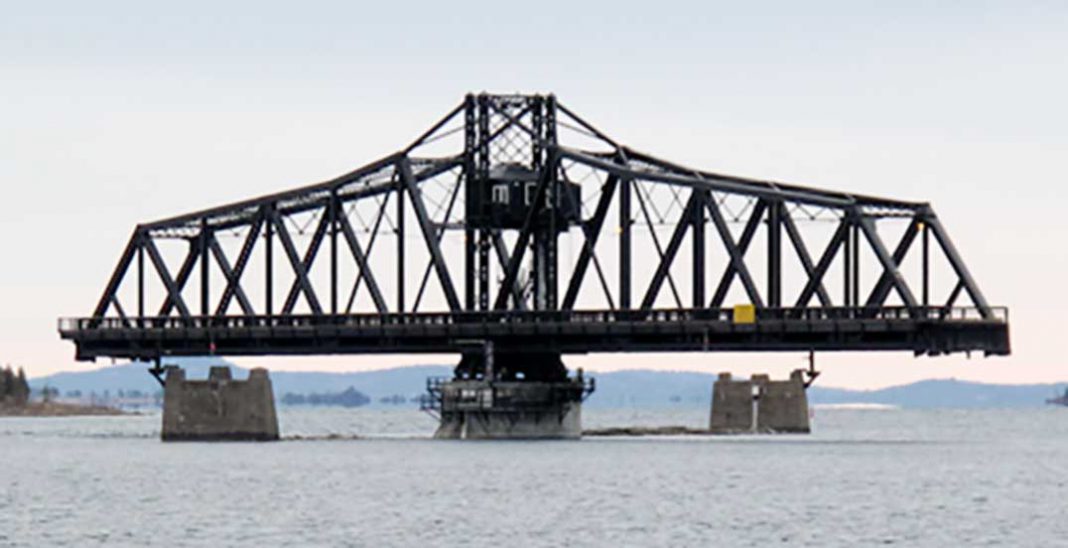Suggested fixed-ends, raised deck model
LITTLE CURRENT—While the Ministry of Transportation (MTO) is about to undertake a study on Manitoulin’s iconic swing bridge, this same topic—has the bridge outlived its useful life?—was discussed at length in 1979 with the ministry developing a study at that time to tackle that very same topic.
The purpose of the report in 1979 was because Manitoulin’s initial Official Plan was nearing completion with individual zoning plans for towns and hamlets being prepared as part of the process.
“Although the present facilities will be adequate for some time to come, eventually the swing bridge will have to be replaced,” the report states.
“The location of the new structure will greatly influence the impact on the Official Plan for the Town of Little Current. The Town, therefore, requested the MTO to prepare a preliminary design report to scan the various alternatives and aid for the orderly planning of the Town.”
It was noted that, in 1977, a traffic study counted 1,750 vehicles crossing the bridge per day, or 263 vehicles per hour. “These figures can be expected to double by the year 2000.”
On May 3, 1979, a meeting was held with then Little Current Mayor John Hodder and council. The following was presented for their consideration by the MTO:
“The present bridge is still sound and adequate for the traffic requirements. The discussion on the possible location of the future structure is to aid the Town in orderly planning. Objectives that were considered imperative, when a replacement bridge structure would one day be built, are the provision of adequate service for a considerable time period, provision for the requirements under the Navigable Waters Protection Act, continued use of the existing bridge during the construction period and technical feasibility.
“Construction in close proximity of the existing bridge is ruled out since wind and currents would make the operation of larger vessels trying to navigate two narrow openings in close succession impossible.
“To the east of the existing structure, the terrain is still open and any type of structure can be erected.
“Due to the fact that the soils consist of fissured limestone, construction of a tunnel would present technical problems and renders this alternative an unlikely solution.
“The 130 foot-high clearance required for a high level bridge will result in long grades that cannot be handled by trucks at a satisfactory speed. Four-laning will likely have to be considered.
“A movable structure at an elevation that would allow unhampered passage for most of the pleasure craft will likely prove the most acceptable alternative.
“Such a structure can only be built on the west side of the existing bridge site—passing over the tip of Goat Island and connecting to an existing road allowance on the south shore of the Little Current side. The railway dock (on Goat Island, still much used by lake freighters in 1979) would be interfered with and modifications may have to be carried out.
“The socio-economic impacts on the Town of Little Current for either of the corridors are beyond the scope of this report.”
The MTO concluded that construction on either side of the existing bridge is feasible, but that “since the actual construction is far from imminent and many changes may take place in the interim, a detailed study at present is not warranted.”
It appears that, almost 40 years later, that detailed study is now due, but members of the current Northeast Town council, which includes Little Current, have much the same concerns as did their 1979 counterparts.




